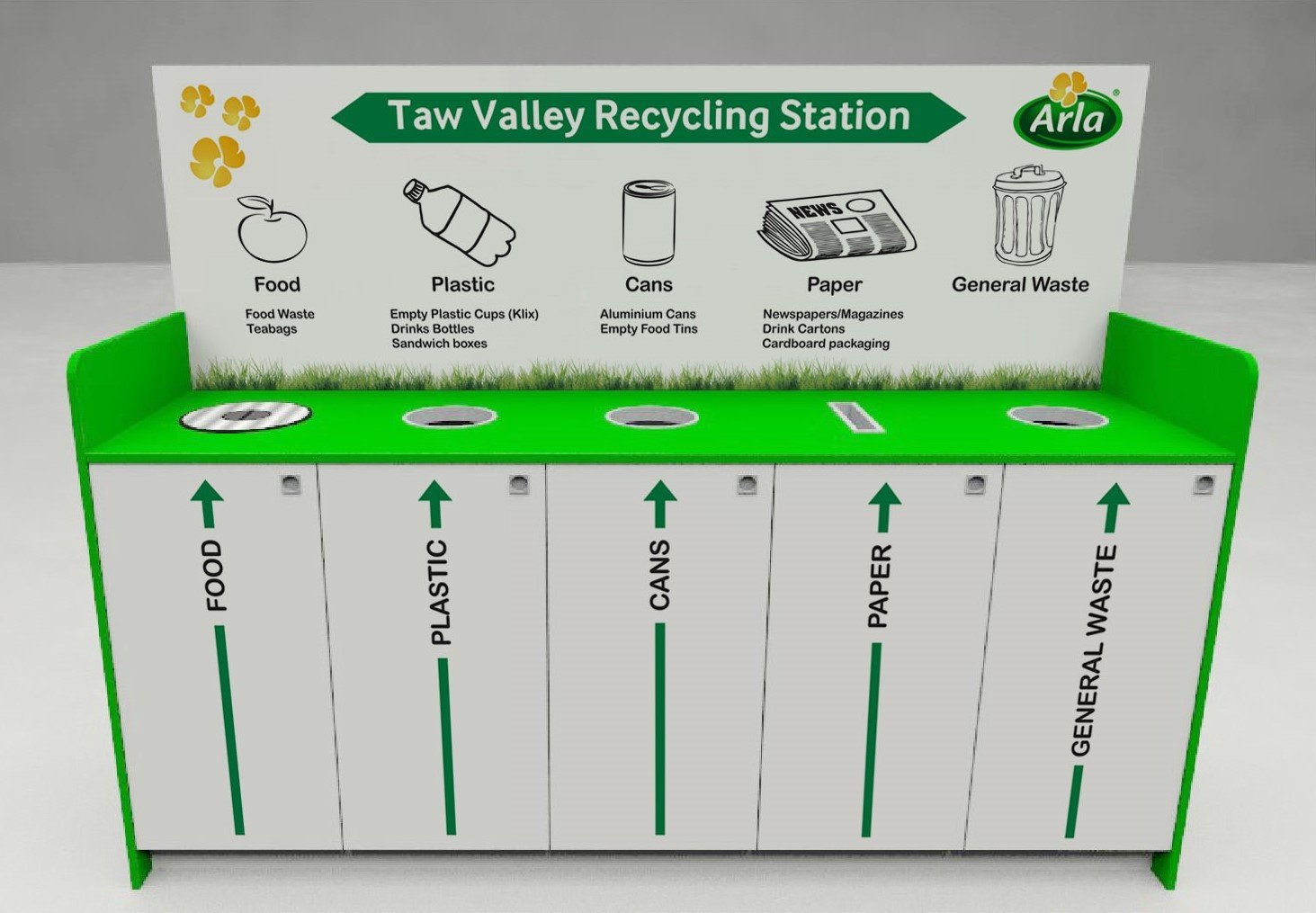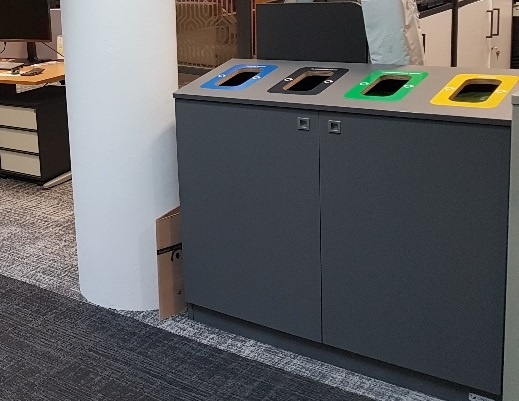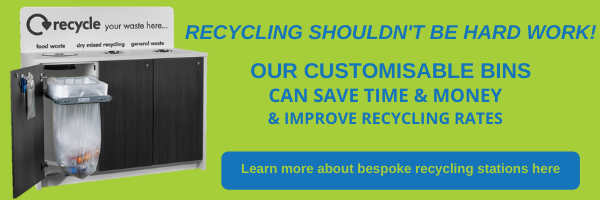Most organisations, regardless of size or industry, will have an office of some kind. In this guide, we’ll look at your options and (as we’re all a bit nosey at heart) what other businesses have done to support their drive to sustainability.
First, let’s talk rubbish.
How much is your waste costing you? When was the last time you took a deep dive into the price of your rubbish? And I don’t just mean your waste collection costs, I mean the end-to-end process.
According to WRAP°, it could be as high as 4% of your turnover. Just take a minute to calculate what that actually means to you in pound signs?
WRAP later goes on to suggest that with the right measures, waste costs could easily be reduced to 1% of your turnover.
Envirowise wants offices to remove individual desk bins and force workers to walk to just one central bin**. |
 |
The benefits of going green.
Asides from helping to reduce costs, as mentioned above, here are some additional (consequential) benefits of creating a sustainable, green office in your workplace.
- Improved efficiency
- Reduced carbon footprint
- Improved brand perception / image
- Improved employee engagement – become more environmentally aware
- Improved environmental performance
All the above, whether individually or as a whole, when achieved can dramatically improve the end goal of your business – sustainable profit.
So, looking back to the original question. How Many Bins Do I Really Need?
Well, it depends. It depends on the layout of your office/s, the number of FTE (full-time equivalent) staff that use it at any given time and the environment in which the bins will sit.
When considering the optimum number of bins per office in your workplace, consider these points:
Your office design / layout: Moving away from single under desk bins, is certainly the way forward and has already been adopted by most businesses we work with. Many offices are maxed out for space already so will try to manage with as few recycling stations possible. You also have to weigh up the tipping point between the capacity of the bin v the number of bins needed. Naturally, the larger the bin capacity, the less bins you need.
Where space allows, we’ve seen businesses opt for a recycling hub with large capacity waste streams chosen to specifically meet the waste needs of the environment in which it will sit. For instance,
- In the work canteen / restaurant: Food, Liquid, Plastic, Cans, Paper/Cardboard and finally a general waste aperture
- In the admin office: Confidential (Lockable) Paper, Paper, Dry Mixed Recycling (DMR) and finally a general waste aperture
- In the warehouse: Plastic Packaging, Paper, Cardboard, DMR and finally a general waste aperture.

The benefit of choosing a recycling hub over individual bins, is that you have much more flexibility to design the waste bins around the specific nuance of the environment it sits in.
Your FTE: Whilst there is no ‘one size fits all’ or any really science behind this calculation, the adopted rule of thumb is 20 – 70 people per recycling station or recycling hub.
And to make the process of waste management as LEAN as possible, another common rule of thumb is that an employee should be no more than 10-15 metres from the nearest recycling station.
The seniority of your FTE: On floors where entry level staff work, such as a call centre, you might see one recycling hub per 60-70 people. Call centres are normally very lean departments, where space is at a premium and every square inch maximised across every business hour. The type of documentation or waste used in this environment will differ from other areas of the business, such as the Executive floors and suites.

Here, you might see less people, more spacious offices where design, cleanliness and brand image is paramount, In these environments you might see the same number of recycling stations but at a ratio of maybe 20-30 people per station.
Your office environment: Is it an office where little waste is generated or is it a canteen / break out area or is it a production or processing area?
Now that you have the right type, number, capacity and aperture bin for your individual office needs, you can also consider adopting these simple, yet effective waste management tactics.
- Set the office printer to print on both sides of the paper by default.
- Use electronic communication where possible to reduce printing and faxing.
- Don’t print out emails unless absolutely necessary. Add “Think before you print” to the bottom of email signatures as a prompt to others.
- Avoid over-production of marketing and publicity material by reviewing distribution lists and regularly updating databases.
- Collect all paper that has been printed on one side and reuse it for printing in draft, or for scrap message pads.
- Reuse envelopes wherever possible, especially for sending information internally.
- Place recycling bins in all offices, ideally recycling hubs or stations.
- Ensure that vending machines allow the use of china mugs rather than plastic vending cups. And where this is not possible, adopt tactics to incentivise cup, bottle or can recycling such as CafeCrush™.
- Avoid purchasing disposable catering products such as milk cartons, sugar sachets and paper plates.
Keen to learn more?
º http://www.wrap.org.uk/sites/files/wrap/WRAP_Green_Office_Guide.pdf
** https://www.theguardian.com/environment/2008/feb/21/waste.recycling

